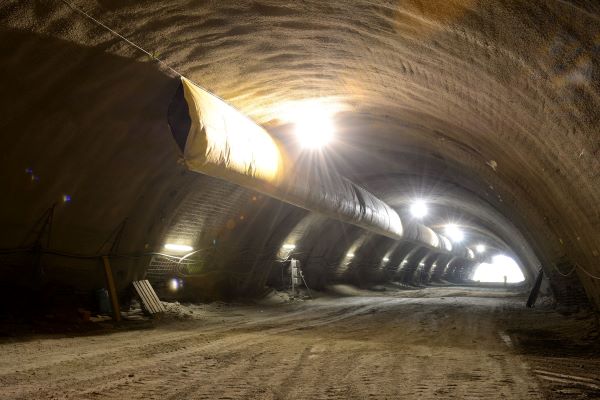Lectures:
1. Physical properties of fluids (density, specific gravity, compressibility, thermal expansion, viscosity, surface and contact tension, gas solubility - basic relationships and units).
2. Physical properties of aquifer (permeability, transmisivity, porosity, volumetric elasticity of aquifer, storativity, hydraulic conductivity - basic relations and units).
3. Systematics of the types of filtration fluxes - basic characteristics and overview of basic flow equations.
4. Law of continuity of flow - general continuity equation (steady and transient filtration of compressible and incompressible fluids).
5. Darcy's Linear Law (Problems of filtration rates, tortuosity). Nonlinear laws of filtration. Turbulent flow.
6. Basic equations of gravitational fluxes of incompressible fluids (Boussinesq equation) – unconfined conditions.
7. Basic equations of fluid filtration under confined conditions (incompressible, compressible under low and high-pressure).
8. Basic analytical equations for flows under steady flow conditions in confined and unconfined systems (Dupuit equations).
9. Depression cone (shape and characteristics). Basic computational relationships. Transient behavior of groundwater drawdown. Interference of wells (depression cones).
10. Basic analytical equations for flows under transient flow conditions in confined and unconfined systems (Theiss equations).
11. Methods of hydrodynamic testing – pumping tests, recovery tests, slug tests.
12. Hydrodynamic testing under steady state flow conditions (confined and unconfined aquifer). Dupuit method.
13. Hydrodynamic testing under transient flow conditions (confined and unconfined aquifer). Theiss type type curves, Jacob's method.
14. Hydraulic boundary conditions, their significance and manifestations in hydrodynamic tests.
Exercise: (or project)
1 / -2 / Calculations of fluid pressures (real gas corrections, compressibility, thermal expansion and fluid mineralization).
3 / Construction of groundwater contour maps – for system with stream drainage.
4 / Laboratory determination of soil permeability - Permeameter - Laboratory measurement.
5 / Calculations of basic hydraulic parameters of aquifers from empirical formulas.
6 / Ground water flow calculations for paralel flow in confined and unconfined conditions – steady state flow (Dupuit equations).
7) Calculation of the depression cone for radial flow flow in confined and unconfined conditions steady state flow (Dupuit equations).
8 / Calculation of groundwater drawdown in the network of points for a well system (interference of wells).
9 / Analytical evaluation of hydrodynamic tests under steady flow conditions.
10 / - 11 / Analytical evaluation of hydrodynamic tests under under transient flow conditions. Theiss and Jacob methods. Implementation of boundary conditions.
12-14 / Hydrodynamic testing project.
1. Physical properties of fluids (density, specific gravity, compressibility, thermal expansion, viscosity, surface and contact tension, gas solubility - basic relationships and units).
2. Physical properties of aquifer (permeability, transmisivity, porosity, volumetric elasticity of aquifer, storativity, hydraulic conductivity - basic relations and units).
3. Systematics of the types of filtration fluxes - basic characteristics and overview of basic flow equations.
4. Law of continuity of flow - general continuity equation (steady and transient filtration of compressible and incompressible fluids).
5. Darcy's Linear Law (Problems of filtration rates, tortuosity). Nonlinear laws of filtration. Turbulent flow.
6. Basic equations of gravitational fluxes of incompressible fluids (Boussinesq equation) – unconfined conditions.
7. Basic equations of fluid filtration under confined conditions (incompressible, compressible under low and high-pressure).
8. Basic analytical equations for flows under steady flow conditions in confined and unconfined systems (Dupuit equations).
9. Depression cone (shape and characteristics). Basic computational relationships. Transient behavior of groundwater drawdown. Interference of wells (depression cones).
10. Basic analytical equations for flows under transient flow conditions in confined and unconfined systems (Theiss equations).
11. Methods of hydrodynamic testing – pumping tests, recovery tests, slug tests.
12. Hydrodynamic testing under steady state flow conditions (confined and unconfined aquifer). Dupuit method.
13. Hydrodynamic testing under transient flow conditions (confined and unconfined aquifer). Theiss type type curves, Jacob's method.
14. Hydraulic boundary conditions, their significance and manifestations in hydrodynamic tests.
Exercise: (or project)
1 / -2 / Calculations of fluid pressures (real gas corrections, compressibility, thermal expansion and fluid mineralization).
3 / Construction of groundwater contour maps – for system with stream drainage.
4 / Laboratory determination of soil permeability - Permeameter - Laboratory measurement.
5 / Calculations of basic hydraulic parameters of aquifers from empirical formulas.
6 / Ground water flow calculations for paralel flow in confined and unconfined conditions – steady state flow (Dupuit equations).
7) Calculation of the depression cone for radial flow flow in confined and unconfined conditions steady state flow (Dupuit equations).
8 / Calculation of groundwater drawdown in the network of points for a well system (interference of wells).
9 / Analytical evaluation of hydrodynamic tests under steady flow conditions.
10 / - 11 / Analytical evaluation of hydrodynamic tests under under transient flow conditions. Theiss and Jacob methods. Implementation of boundary conditions.
12-14 / Hydrodynamic testing project.
